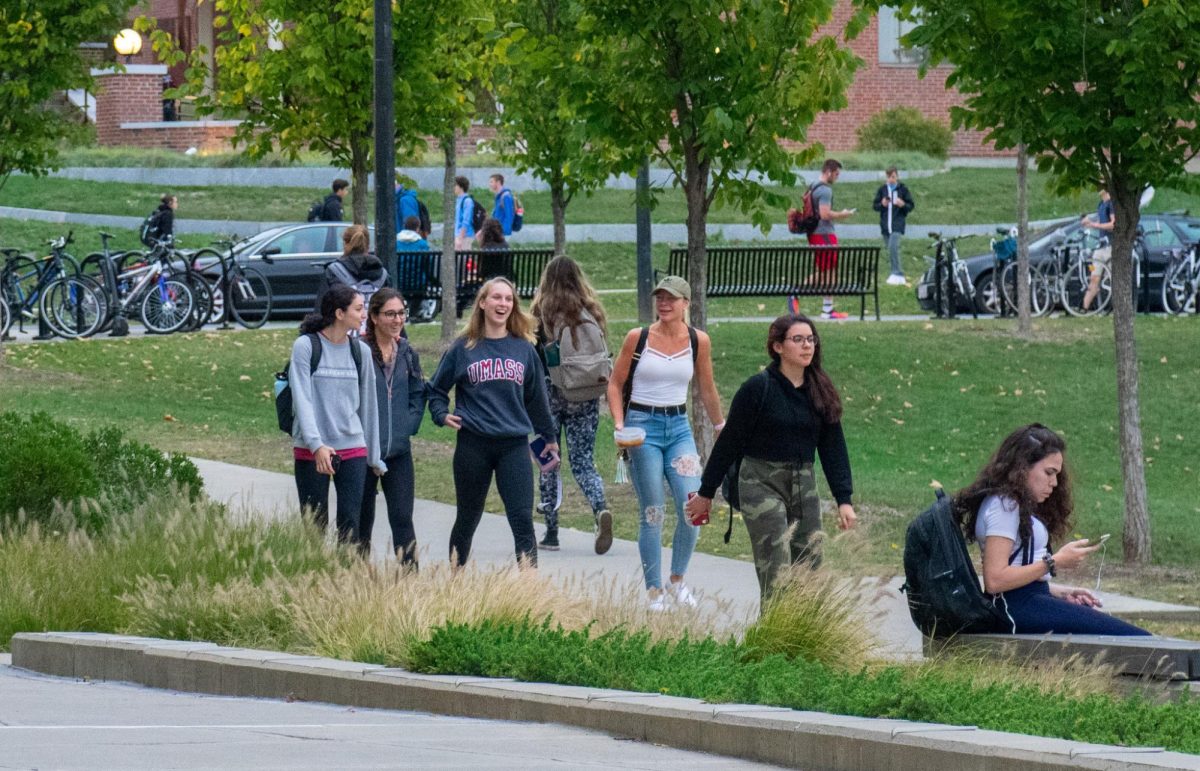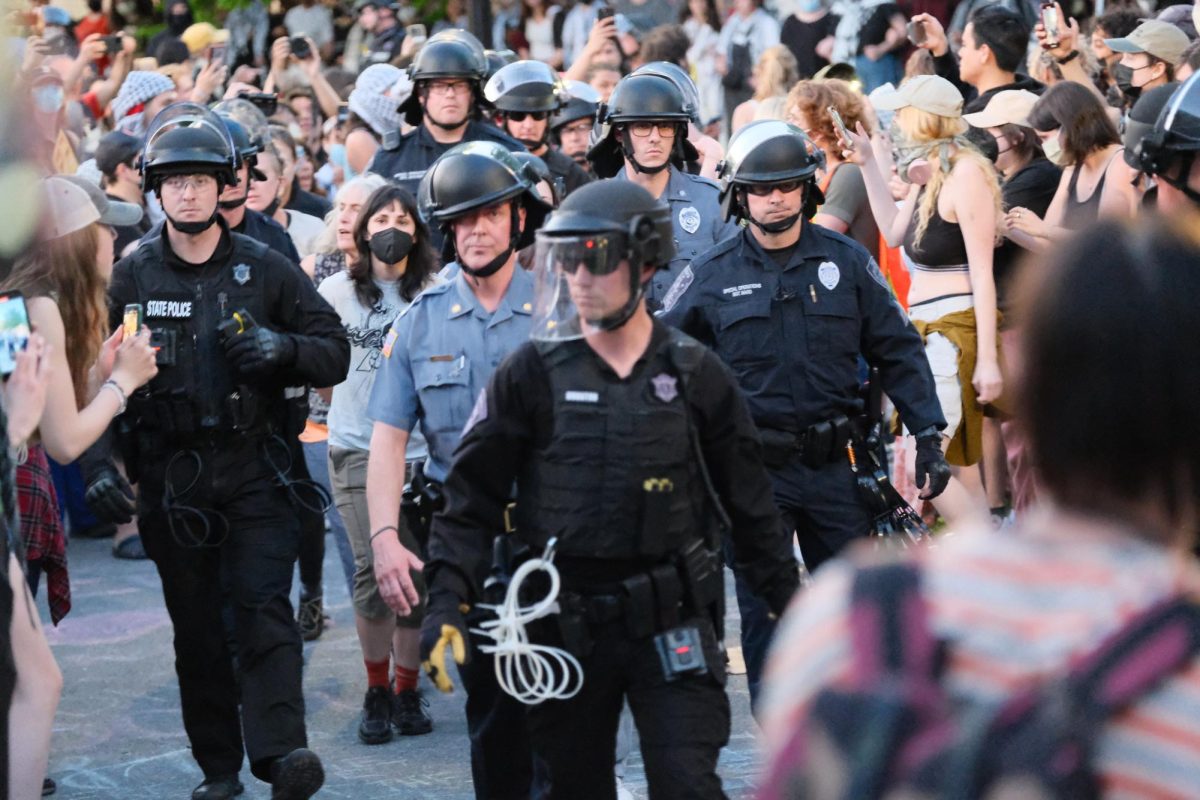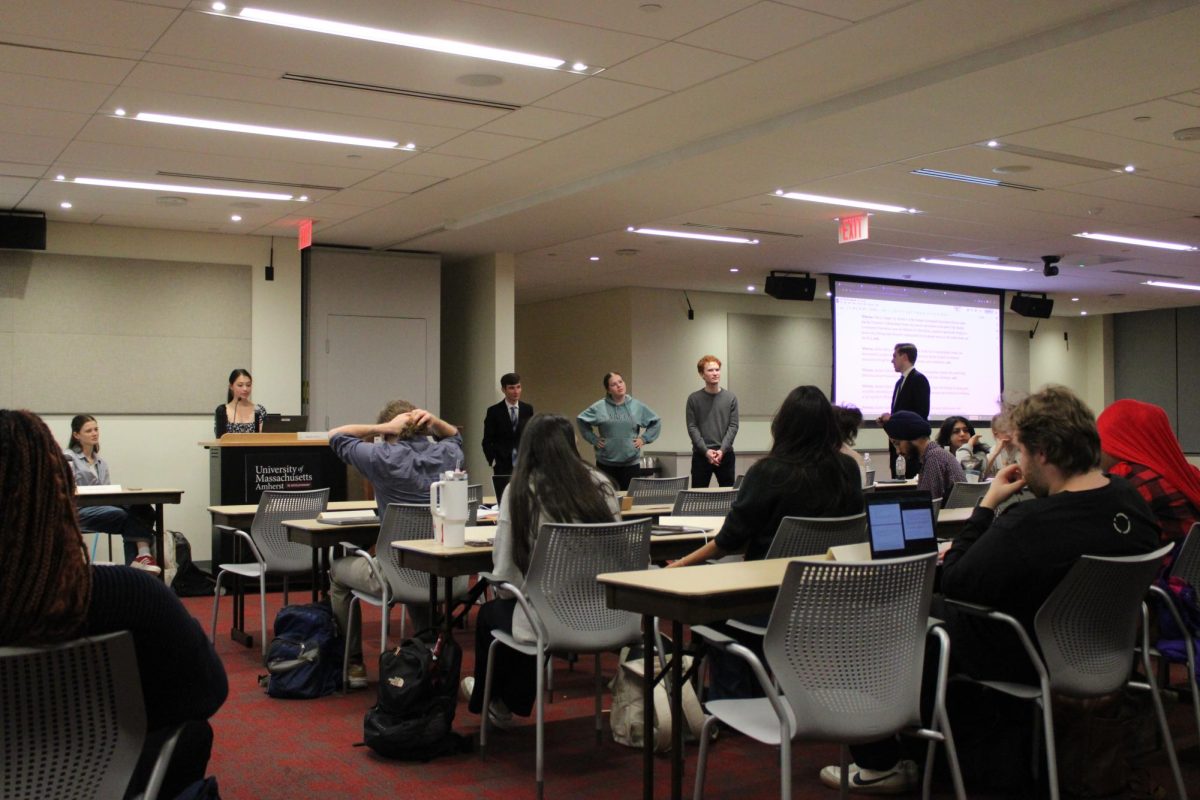James Young, a University of Massachusetts English Professor, and Chair of the Judaic Studies Department, delivered a lecture yesterday at Amherst College’s Stirn Auditorium on the differing ways in which nations memorialize the Holocaust.
The lecture, titled, “The Uncanny Arts of Holocaust Memory”, dealt with various nations’ roles in the Holocaust, and how these roles affected their attempts to build monuments to the tragedy. Young recently advised the German government on how best to build its own memorial.
His lecture dealt mostly with European countries such as Denmark, which unlike most European nations was able to protect most of its Jews from Nazi aggression.
“Denmark can often be self-aggrandizing [regarding the Holocaust]”, Young stated, “and they should give themselves credit.”
However, as Young explained, the Danish government turned away Jewish German refugees at the start of World War II. In response to this, a Danish Holocaust memorial featured images of the faces of Bosnian refugees projected onto a canal.
“This was to show how European countries were doing nothing for these refugees, and to remind the Danes that Denmark had shut off its borders before the war,” he said, as he showed slides of the exhibit.
Young also displayed slides of German memorials.
“Many German artists think of an ‘everlasting memorial’ as fascist,” he said, “one which makes the audience into bystanders, and tells them exactly what to think.”
One memorial that was built in an attempt to avoid this sort of “fascism” was a 12-meter tower in the German town of Harburg. Harburg’s citizens, as well as visitors to the town, were instructed to write their signatures on the tower. As the list of signatures grew, the tower was slowly lowered into the ground. In 1993, seven years after the tower was built, it was lowered completely, and the town square now stands empty.
“The tower was intended not to be a place of remembrance,” stated Young, “but a place to unburden oneself and forget.”
In 1995, a contest was held in Germany, in which artists were asked to design an official Holocaust memorial, to be located in Berlin. Young was asked to advise the holders of the contest, and suggested that the government refrain from building one “official” monument.
Nonetheless, the contest was held. Among the suggestions were that a large bus station be built, with 600 buses traveling to the sites of former concentration camps. This proposal, although popular, was rejected because it was felt that sending people to Poland would place blame on the “outside.”
Another artist suggested that the Brandenburger Tur, a triumphal German National Monument, be destroyed. The artist intended to spread its ashes around the city.
The winning design was for an enormous tilted stone slab featuring the names of 4,500,000 Holocaust victims. Young admits to despising the idea, particularly because it would incorporate materials from an ancient Israeli site where Jews once killed themselves rather than be enslaved by Romans.
Plans for that memorial were later scrapped. Another Holocaust memorial is now being built in Berlin by New York-based artist Peter Eisenman. His piece will feature 3800 stone pillars of various heights placed in field. Visitors will have to find their own path through the pillars.
“It has the sense of a giant cemetery,” said Young. “But there is no direct reference to the Holocaust.” The purpose of the piece, he said, was not for the monument to “remember” the Holocaust, but rather for visitors to do so.
Young is the author of several books on Holocaust memory, the latest of which is titled At Memory’s Edge. His lecture marked the unveiling of an exhibition at Amherst College’s Mead Art Museum titled “Resistance and Rescue in Denmark: Photographs by Judy Ellis Glickman.”






